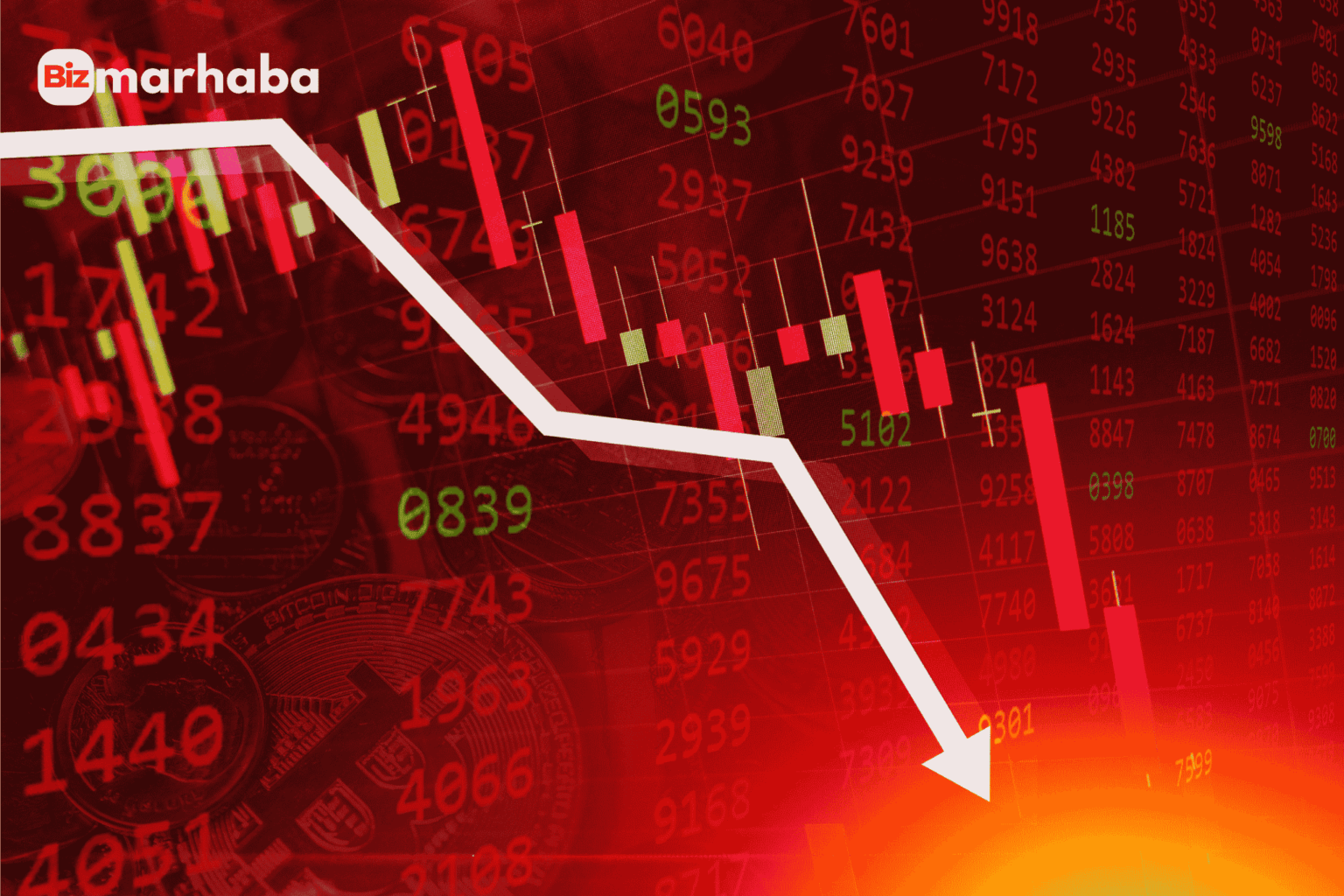- What triggers a Stock Market Crash?
- The Characteristics of Bitcoin: An alternative form of Volatility.
- Correlation: and the Shifting Relationship.
- Past Conduct in Times of Crash.
- Why the Bitcoin Crashes with Stocks.
- Are Bitcoins a Deceitful Safety Net?
- How Investors Can walk the dual volatility.
- Conclusion
The term stock market crash is a fear, uncertainty, and opportunity in some cases. It is a time when confidence fails and valuations fall and panic hits financial systems. The investors have been observing the equity markets go up and down over a century but in the contemporary world, a new player has entered the field; the Bitcoin.
The emergence of Bitcoin has transformed the discussion on market cycles, investment psychology and correlation of assets. Is Bitcoin an economic insurance against conventional market volatility, or is it just another risky asset that goes under when panic starts? The manner in which Bitcoin will respond to crashes in stock markets can suggest a lot about the maturity of the cryptocurrency, as well as its future position in the world of finance.
What triggers a Stock Market Crash?
A crash in the stock market is a sharp, intense fall in market value of stocks in major indices which may be accompanied by a panic rush and systemic pressure. These crashes are likely to arise when a multiplicity of factors collide:
Too Much Speculation and Leverage.
Thriving markets tend to cause overconfidence. Investors borrow a lot to pursue returns and overheat the prices drastically above intrinsic value. In the bursting of the bubble, decline involves margin calls and forced selling.
Economic or Geopolitical Shocks.
Confidence and liquidity can be disrupted by recessions, wars, political instability or unforeseen changes in policy with a sell-off ensuing.
Liquidity Crises
The credit crunch causes inability to transact or to find buyers, which increases losses when financial institutions or markets freeze.
Investor Psychology
Fear spreads quickly. Even healthy assets can be caught in the panic once the investors become convinced that the prices would keep declining.
Over time, since the crash of the 1929 as well as the financial crisis of 2008 and the pandemic shock of 2020, these factors have reoccurred in different manifestations. Each crash is special, however, on the inside, an emotional and structural force can often be the cause.
The Characteristics of Bitcoin: An alternative form of Volatility.
Bitcoin was created in 2009, in the ruins of the global economic crisis – a time of lack of trust in the banking and centralized system. It was intended to be decentralized, transparent and devoid of manipulations by the governments or central banks.
However, as Bitcoin was being projected as digital gold, its history has shown otherwise: it is highly volatile. 10 percent day-in day-out fluctuations, huge booms, and huge corrections have become its genetic makeup. This volatility is caused by a number of factors:
- A mature market that has little liquidity as compared to equities.
- The impact of mood, market cycles and speculation.
- Lack of clear regulation and high-frequency technological or security shock.
When a crash in a stock market takes place, the question arises; will Bitcoin be able to escape the storm or will it be caught up in the same wave?
Correlation: and the Shifting Relationship.
Bitcoin has not always been correlated with the stock market. During the first years of its development, Bitcoin was traded mostly in isolation, as well as through adoption and speculation, but not in the macroeconomic context. The investors viewed it as another system, which was not correlated with Wall Street.
The relationship however started to narrow once institutional investors ventured into the crypto space. Bitcoin is now being used by hedge funds, ETFs and corporate treasuries as a way of diversifying portfolios. This incorporation has legitimized Bitcoin as well as tied it more to conventional financial behavior.
During peaceful times on the market, Bitcoin occasionally acts by itself. However, at the time of crisis, correlations are likely to increase drastically. In times of liquidity crunch, asset-based investors sell off riskier assets such as cryptocurrencies. Fear is indiscriminate and Bitcoin, being a highly volatile instrument, would tend to be hit more severely when the panic hits.
Past Conduct in Times of Crash.
The 2020 Pandemic Crash
Bitcoin crashed with stocks in March 2020 when the COVID-19 pandemic caused a meltdown in the global market. Investors wanted their money back in the form of cash, selling even gold and online assets to cover up the losses in other sectors. Bitcoin fell more than 50 percent within days and then shot up as stimulus and monetary easing revived risk appetite.
This episode demonstrated that bitcoin acts more of a risk asset than a safe haven in situations when there is high stress.
The 2022 Market Downturn
In 2022, inflation exploded, central banks increased interest rates, and stocks, as well as crypto, crashed. Technological-focused indices fell by more than 10 percent and the bitcoin dropped by over 60 000 to below 20 000. The increase in yields and constrained liquidity struck at all the speculative ends of the market at the same time.
What they meant was the message was received: when the money supply in the world shrinks, the Bitcoin does as well.
The Present Landscape
At the end of 2025, Bitcoin will trade in six-figure volumes, although its connection to conventional markets will remain dynamic. Bitcoin usually performs well when the confidence of the investors and the availability of liquidity is high. However, in case of fear, the digital asset will revert to a downward follow of equities, in some cases more aggressively.
Why the Bitcoin Crashes with Stocks.
The relationship between Bitcoin and stock market crashes can be described in a number of lenses:
Liquidity Needs
In the state of panic, the investors sell anything possible and not only what they wish. The availability of the Bitcoin in the 24/7 market makes it a ready source of cash whenever there is an emergency.
Risk Perception
Bitcoin is considered to be a high-risk asset despite its revolutionary potential. The risk assets are the first to be sold in case of a crash.
Institutional Overlap
As institutions are diversifying into Bitcoin, it is being included in the same portfolios of equities. Mass dumping of stocks can therefore indirectly bring down Bitcoin.
Leverage and Derivatives
Cryptocurrency market is highly leveraged. The liquidations due to margin calls increase the crash effect when the prices decrease.
Are Bitcoins a Deceitful Safety Net?
The concept of digital gold with Bitcoin still is attractive. It is in theory a hedge against inflation and monetary debasement, its fixed supply and non-dependence upon central banks. In the long-term, with deeper adoption and volatility decelerating, it may do so in a more credible way through Bitcoin.
In reality, however, the safe-haven status of Bitcoin has been intermittent. It has occasionally followed the footsteps of gold, in that it rises as the confidence in fiat declines, though it has more frequently been the way of a speculative technology asset. Its development as a store of value as compared to a trading vehicle will hinge on whether it evolves to that or not.
How Investors Can walk the dual volatility.
The peculiarity of holding equities and Bitcoin in the hands of investors is to be in charge of two volatile markets that can collapse at the same time. A couple of principles can be useful:
Still Matters Diversification.
Bitcoin can be used to diversify a portfolio, although it does not need to be used as a complete replacement of conventional assets. It is always necessary to balance across asset classes.
Understand Time Horizons
The risks of crashes are increased in the case of short-term traders. Deep but temporary losses should be expected by long-term investors who are convinced in the future of Bitcoin.
Keep an eye on Liquidity and Sentiment.
Even good assets go down when the liquidity evaporates in international markets. Early warning signs can be observed through watching the monetary policy, credit conditions and investor sentiment.
Keep Perspective
The crashes in the market are a part of the economic cycle. All downturns ultimately shift to and become recovery. The history of Bitcoin, its drastic falls and record recoveries, supports this tendency.
Conclusion
The crash of stock markets shows the fear psychology and vulnerability of the interconnected systems. Bitcoin, which was initially believed to be beyond the influence of such forces, has ended up being in the same international beat – at times contributing to the messiness, at other times causing the recovery.
As far as Bitcoin is not still a safe haven, it is developing. Every crash informs investors about the characteristics of a crash and its position in the overall financial ecosystem.
Ultimately, the two markets have a fundamental fact: they are built on confidence and pulled down by fear. The human emotion in every trade will not be different whether it is in digital code or corporate equity. It is the distinction not between the asset, but between the psychology that sets it in motion.
ALSO READ AMD Stock Predictions 2030 | Upgrade Analysis & Buy Guide








